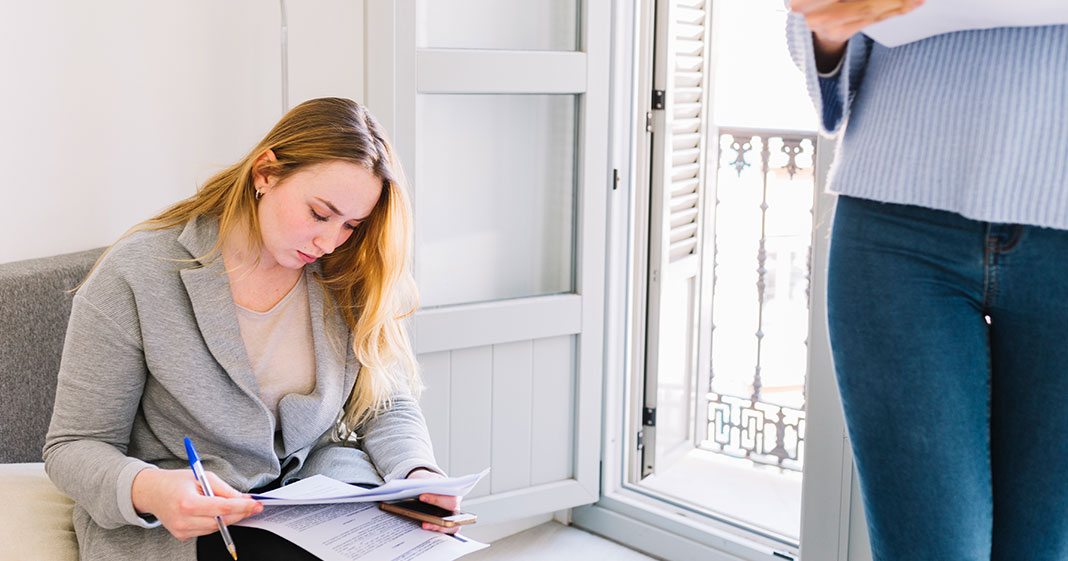25 Must-See Items Checklist for Apartment Walkthrough
You can determine if a rental is worth your time and money with the aid of a helpful apartment walkthrough checklist and a few useful pointers.
The first thing you should do after discovering a rental that appears to be ideal on paper is to take a tour and conduct a more thorough inspection. You can get an idea of the rental’s condition and potential living situation by taking a tour or walking through it.
If you’re like most prospective tenants, you’ll visit the house twice in person to make sure it’s a good fit. Every rental has advantages and disadvantages, so you don’t want to get overly excited and ignore things that could make your time there less enjoyable, like an old dishwasher, a very stained carpet, or loud traffic all day long.
You will usually have the chance to formally record the move-in condition of your rental and notify the landlord of any issues once you sign a lease. However, it can be beneficial to use this first tour as an opportunity to check for any potential issues with the property.
We’ve put together a helpful walkthrough checklist with tips on what to look for and what to expect to help you know what to look out for. Bring it with you.
What is required to complete the walkthrough
- A digital camera or a cell phone camera
- A torch
- A length of tape
- The printout of the checklist
- A writing instrument
Examine the rental property where you intend to reside.
Although they can give you an idea of what it might be like to live there, models cannot replace seeing the apartment you are thinking about. When you’re showing around a brand-new apartment or condo building, this is especially relevant. You can assess the unit you are considering by taking a tour and examining its precise layout, window placement, and accessibility to amenities like elevators and stairwells. Being inside the apartment will also allow you to smell any traces of smoke or pets, if the unit has been occupied before, and determine whether you would like to request a special cleaning.
Record your conclusions.
Utilizing the checklist, assess the state or presence of the following as you tour the rental:
- General lighting
- Locks
- Stairwells and elevators
- Entrances
- Windows
- Window coverings
- Laundry facilities
- Ceilings and walls
- Cabinets
- Parking
- Doors
- Closets
- Floors
- Countertops
- Appliances
- Electrical outlets
- Water pressure
- Toilet
- Sinks, tub, and shower
- Interior lighting
- HVAC
- Noise
- Amenities
- Cell reception
- Smoke and carbon monoxide detectors
Bring a flashlight and a phone to take photos throughout the home, condo or apartment. Pay particular attention to any feature or condition that might stand out as a potential repair later on, including unrepaired nail holes in the walls or excessive soiling of the carpet. The photos will allow you to take a closer look when you’re back at home deciding whether to sign a lease.
Consider going at various times of the day.
See the rental and explore the neighborhood both during the day and at night, if at all possible. If you work late or enjoy going out with friends in the evenings, you may find that it is much noisier at night than it is during the workday. There may also be a shortage of parking in the evening. Consider your way of life and the things you require and desire to feel secure in your house and community.
Check reviews
When renting an apartment, learn about the building by doing some research and reading reviews. If the building is professionally managed, check online reviews and do some research on the management company as well, as they will be in charge of upkeep, repairs, and rent collection.
To get a more rounded view, pay close attention to reviewers who offer advantages and disadvantages. People who are unhappy tend to voice their opinions more, and although their opinions are valuable, they can present a skewed image of what it might be like to live there. Be alert for any possible warning signs. Do tenants find it difficult that the management doesn’t answer their requests for building maintenance? Are there grievances that the rights of tenants are being disregarded?
Examine the lease.
Get a copy of the lease and peruse its contents. All of it. Bring the copy home with you or take a picture of every page if you won’t have time to read it there. To buy yourself extra time, you can also find out from your landlord if they allow digital lease signing via a website.
Any lease you sign is enforceable against you by the landlord, and you will be bound by its terms. Speak with the landlord or property manager if there is anything in the lease that you don’t understand or that you find objectionable. Never sign anything that you don’t fully understand.
Taking care of problems
Before you sign a lease, try to work out a solution with the landlord or property manager if there is something you don’t like or are worried about. For example, request that the blinds be replaced if the caulking around the tub in a bathroom is moldy or if the blinds are bent or cracked. It should be noted that even after you sign a lease, your landlord may still be obligated to make small repairs and may be in charge of any repairs that compromise a tenant’s health and safety on the property, depending on the tenant laws in your area.
Recall that you will be residing there for the duration of the lease, and you have a right to a secure, welcoming, and comfortable home.









Leave a Reply